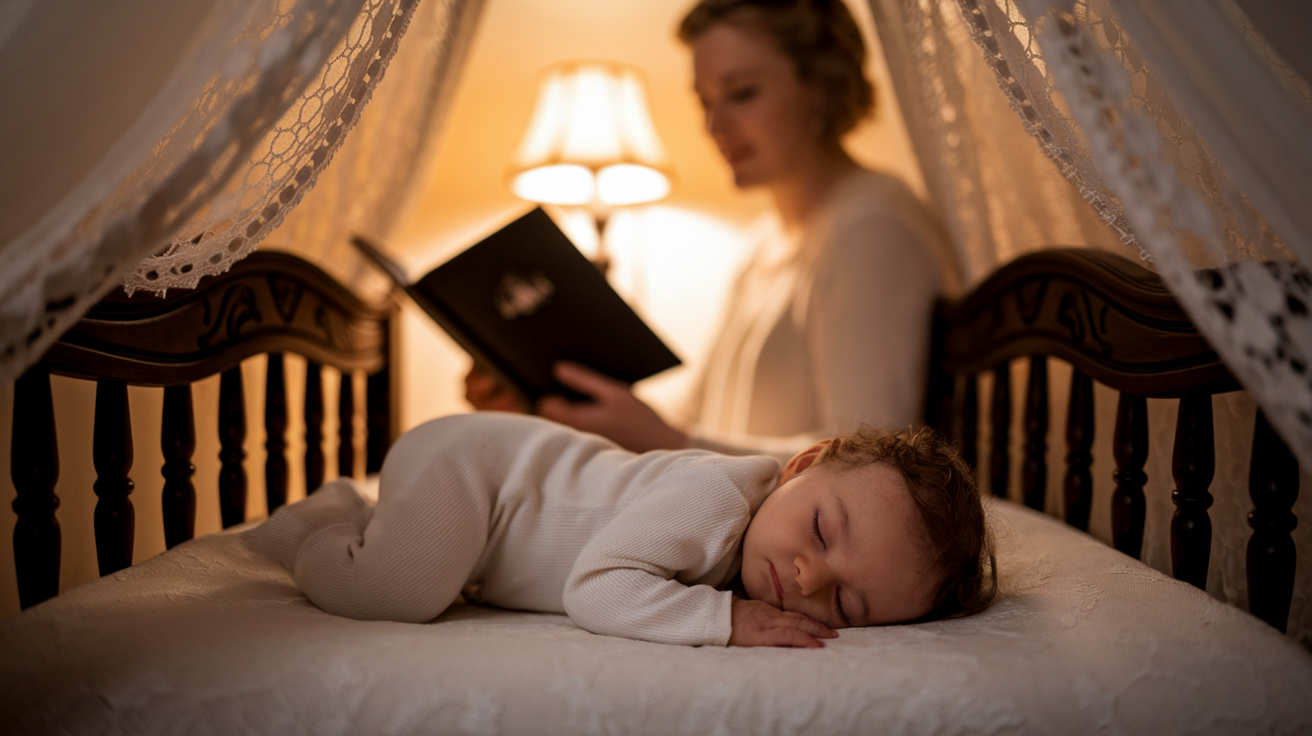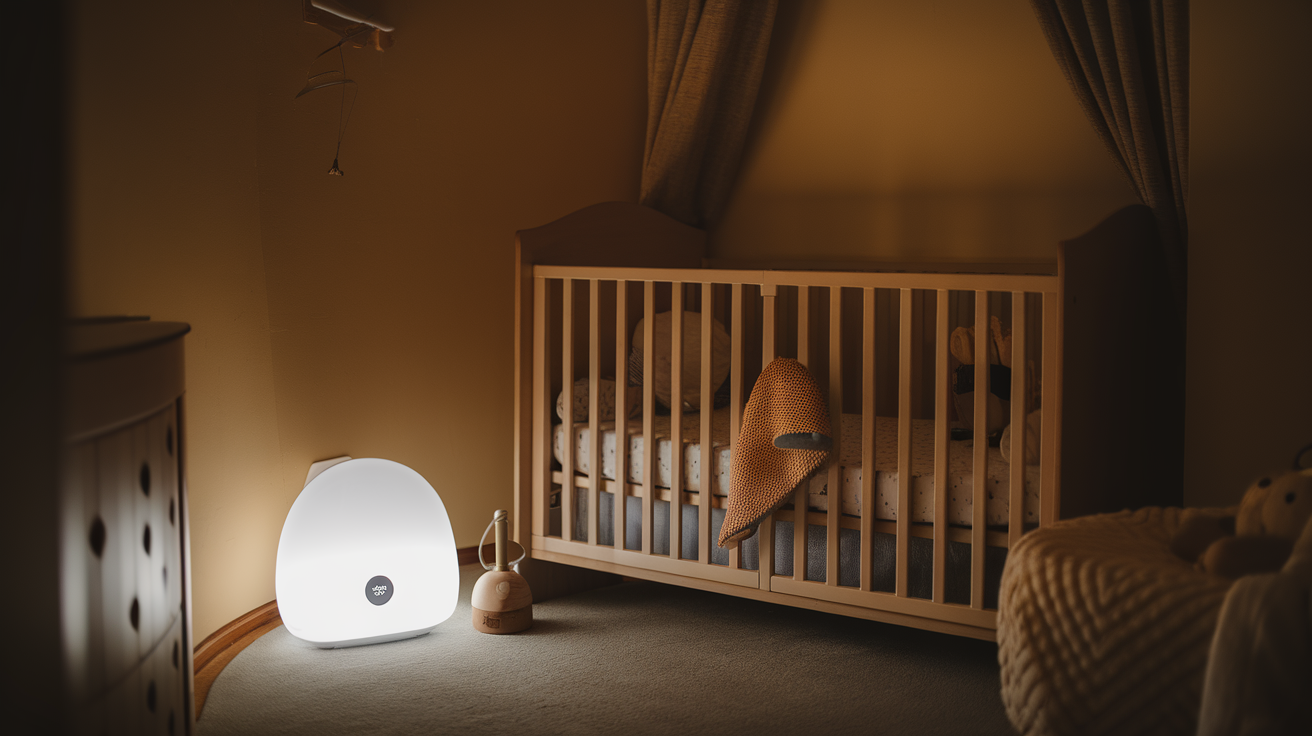When Does the Witching Hour End? Surviving Baby’s Fussy Time

Welcome to the baby witching hour – one of parenthood’s most perplexing and exhausting challenges. This isn’t a reflection of your parenting skills or something you’ve done wrong.
The evening hours that once meant relaxation and winding down have suddenly become a test of endurance. Parents often find themselves wondering if their baby is hungry, sick, or uncomfortable.
The truth is, your little one is likely going through a completely normal process that has puzzled and challenged parents for generations.
Understanding the witching hour isn’t just about surviving those difficult evening hours – it’s about recognizing that this phase serves a purpose in your baby’s development.
With the proper knowledge, strategies, and realistic expectations, you can navigate this period with greater confidence and less stress, knowing that calmer evenings are ahead.
What is the Baby Witching Hour?
The “witching hour” sounds spooky, but it’s a real thing that happens to babies! This fussy time usually strikes between 5 PM and 11 PM, and despite its name, it can last for hours.
During this period, your little one might cry nonstop, even though they’re fed, clean, and should be comfortable.
They may clench their tiny fists, arch their back, seem cranky, and fight sleep even when they’re clearly tired. Nothing seems to calm them down!
Parents borrowed this mysterious name from old folklore because babies act so puzzling during these hours, just like magic was involved!
When Does It Start?
The witching hour typically begins during the second or third week of your baby’s life, though some parents notice early signs as early as the first week.
This timing isn’t coincidental – it corresponds with several important developmental changes happening in your newborn’s system.
Initially, the witching hour often starts subtly. You might notice your baby becoming slightly more fussy than usual during the evening hours, or perhaps they seem more difficult to settle after their normal feeding time.
Over the following days and weeks, this evening, fussiness typically becomes more pronounced and predictable.
The intensity usually builds gradually, reaching its peak around 6 to 8 weeks of age.
Understanding the Timeline: When Does It End?

Most babies begin to outgrow the witching hour between 3 and 4 months of age, though some may experience it until 6 months.
- Better sleep regulation (around 3-4 months) – Your baby begins to sleep for longer stretches at night and develops more predictable nap schedules during the day.
- Increased social awareness and interaction – Babies start smiling responsively, making eye contact, and showing interest in faces and voices around them.
- Improved digestive functionand reduced gas – As the digestive system matures, individuals experience fewer episodes of uncomfortable gas and better digestion of milk or formula.
- More predictable feeding patterns – Feeding times become more regular and spaced out, with babies able to consume larger amounts less frequently.
- Increased ability to self-soothe – Babies develop skills like sucking on their hands, finding comfort positions, or calming themselves without constant parental intervention.
Remember, every baby develops at their own pace. Some infants may experience shorter periods of evening fussiness, while others may need several months to settle into more predictable patterns.
Why Does the Witching Hour Happen?

Understanding the reasons behind your baby’s evening fussiness can help you respond more effectively to their needs. Common causes include:
1. Growth Spurts and Hunger
Babies often experience growth spurts around 2-3 weeks and again at 3 months. During these periods, they need more nutrition, leading to cluster feeding sessions that can occur every 30 minutes to an hour.
Your baby may seem hungrier than usual and want to feed continuously, even after what appears to be a full feeding.
This increased appetite can create a cycle where your baby becomes frustrated when they can’t get enough milk quickly enough.
2. Overstimulation
After a full day of new sights, sounds, and sensations, your baby’s developing nervous system can become overwhelmed.
The evening hours represent a culmination of all the day’s stimulation, leading to fussiness as they struggle to process the events of the day.
Your baby’s brain is working overtime to make sense of faces, voices, lights, textures, and movements they’ve encountered throughout the day.
3. Fatigue
Newborns can become overtired easily, and an overtired baby often has more difficulty settling down. If naps are short or disrupted during the day, evening fussiness may become more pronounced.
When babies miss their optimal sleep windows or have poor-quality daytime sleep, they produce stress hormones, such as cortisol, which makes it harder for them to relax.
Paradoxically, the more tired your baby becomes, the more wired and fussy they may appear.
4. Digestive Development
Your baby’s digestive system is still maturing, and gas or stomach discomfort can be more pronounced in the evening hours.
Throughout the day, air bubbles and gas can accumulate in your baby’s intestines, causing discomfort that peaks in the evening.
Their immature digestive tract may struggle to process breast milk or formula efficiently, leading to cramping, bloating, or reflux symptoms.
5. Natural Circadian Rhythm Development
Babies are born without established circadian rhythms. The evening fussiness may be part of their biological process of developing these natural sleep-wake cycles.
In the womb, babies were lulled to sleep by their daytime movements and often became more active when they were resting at night.
After birth, they need to learn to distinguish between day and night, and their internal clocks are still forming.
Practical Strategies for Managing the Witching Hour
Once you’ve ruled out the obvious baby issues (dirty diaper, hunger, temperature), these proven techniques can help ease the tears during the witching hour.
The 5 S’s Method

Pediatrician Dr. Harvey Karp’s “5 S’s” can be particularly effective during the witching hour. These techniques mimic the womb environment and often provide immediate relief when used together.
Try combining multiple S’s simultaneously – for example, swaddling while shushing and gently swinging your baby.
- Swaddling: Wrap your baby snugly in a blanket
- Side/Stomach position: Hold baby on their side or stomach (while awake and supervised).
- Swinging: Gently swing your baby.
- Sucking: This typically involves offering a pacifier or allowing the baby to suck on a clean finger.
- Shushing: Make a loud “shush” sound near your baby’s ear to mimic the whooshing sounds heard in the womb.
Environmental Modifications

Creating a calm, womb-like environment can significantly reduce your baby’s overstimulation during the witching hour.
Small changes to lighting, sound, and location often make a big difference when babies are overwhelmed by the day’s sensory input.
- Dim the lights: Create a calm, less stimulating environment
- Use white noise: Fans, apps, or white noise machines can be soothing
- Change locations: Sometimes, moving to a different room helps
Coping Strategies for Parents

The witching hour isn’t just challenging for babies – it’s exhausting for parents too. Building effective coping strategies helps you maintain your patience and emotional well-being during this challenging period.
Remember that taking care of yourself is crucial for caring for your baby.
- Tag-Team Approach: If you have a partner, take turns managing the fussy period. One person can handle the baby while the other prepares dinner, showers, or takes a mental break.
- Take Safe Breaks: Put your baby down safely and take a 5-minute break if you’re feeling overwhelmed – it’s perfectly okay to place your baby in their crib or another safe space and step away for a few minutes to collect yourself.
- Accept Help: Welcome support from family and friends whenever it’s offered, if it’s someone holding the baby.
At the same time, you shower or bring yourself a meal, as assistance from others can make a significant difference during this challenging time. - Remember This is Temporary: Even though it feels endless in the moment, the witching hour will pass as your baby develops, with most babies outgrowing this phase by 3-4 months, and each day brings you closer to calmer evenings.
Real Parent Experiences: How Long Did It Last?
Every parent’s experience with the witching hour is unique, but hearing from others who’ve been through it can provide hope and realistic expectations.
Sarah, mother of two: “With my first baby, the witching hour started at exactly 3 weeks and lasted until about 4 months. Every evening from 6 to 9 PM, nothing would calm him.
With my second, it was much milder and only lasted about 6 weeks.”
Marcus, father of twins: “Having twins meant double the witching hour chaos. It started around 2 weeks for both babies, but didn’t sync up – one would calm down just as the other started.
It gradually improved around 3.5 months.”
Jennifer, single mother: “The witching hour felt like it would never end when I was handling it alone.
It lasted from about 3 weeks to 4 months, but I noticed improvement once I started swaddling and using white noise consistently.”
These real-life stories illustrate the diverse range of timelines and experiences families encounter during this challenging phase.
Parent Discussion: What Worked
Real parents share their most effective strategies for managing the witching hour, from tried-and-true methods to creative solutions that surprised them.
These practical insights come from families who have successfully navigated this challenging phase. Learning from other parents’ experiences can provide new ideas when your usual techniques aren’t working.
Tried-and-True Methods from Experienced Parents
Rachel, mother of three: “The vacuum cleaner was my lifesaver! The white noise would calm my daughter instantly. I’d turn it on and walk around the house – worked every single time.”
David, father of one: “We found the ‘witching hour walk’ – every evening at 5:30 PM, I’d put our son in the stroller and walk for 45 minutes around the neighborhood. Rain or shine.”
Creating a Witching Hour Survival Plan

Having a structured approach to the witching hour can help you feel more prepared and less overwhelmed when it strikes.
A good survival plan includes both practical preparations and emotional coping strategies.
| Time | Preparation Task | Why It Helps |
|---|---|---|
| Morning | Prepare dinner earlier in the day | Reduces stress during fussy evening hours |
| Afternoon | Set up a calm environment with dim lighting | Creates a soothing atmosphere before the baby gets overwhelmed |
| Before 5 PM | Have soothing tools ready (swaddle blankets, white noise, pacifiers) | Quick access to comfort items when crying starts |
| Evening | Keep backup snacks and water nearby | Maintains your energy during long soothing sessions |
Final Thoughts
The witching hour tests every parent’s patience and confidence, but it also teaches valuable lessons about resilience and problem-solving.
While these evening hours can feel overwhelming and endless, remember that you’re not alone in this experience – millions of parents have successfully weathered this challenging phase and emerged stronger on the other side.
The witching hour will pass, calmer evenings will return, and you’ll look back on this time with a sense of accomplishment and perhaps even nostalgia.
Have you experienced the witching hour with your baby? What strategies worked best for your family, and how long did this phase last?
Share your experiences in the comments below – your story might be exactly what another struggling parent needs to hear.






